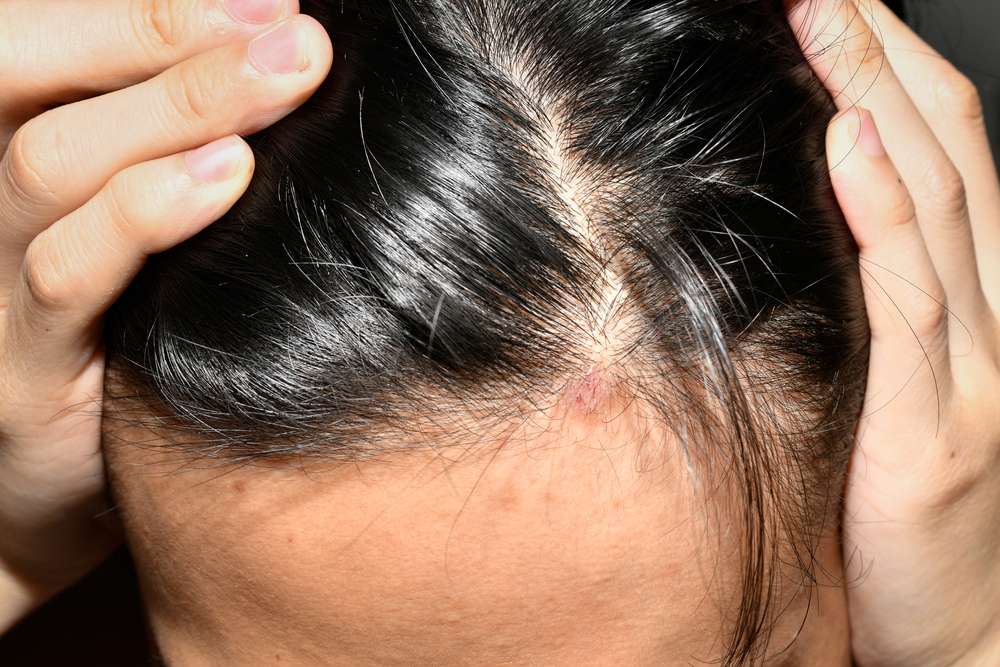Scalp Psoriasis Explained: What Causes It and How to Treat It
Dealing with constant itching, flaking, or thick patches on your scalp? It could be more than dandruff—it might be scalp psoriasis. This common autoimmune condition can lead to irritation, embarrassment, and even hair thinning if ignored. In this guide, you'll discover what causes it, how to spot early symptoms, and which soothing treatments actually work. Whether you're newly diagnosed or tired of recurring flare-ups, here’s your path to a calmer, healthier scalp.

What Are the Visual Signs Found in Psoriasis Pictures
Psoriasis presents distinct visual characteristics that help differentiate it from other scalp conditions. The affected areas typically show raised, red patches covered with thick, silvery-white scales. These lesions can appear anywhere on the scalp, from small isolated spots to extensive coverage affecting the entire scalp area.
The condition often extends slightly beyond the hairline, affecting the forehead, neck, and around the ears. Hair loss may occur in severely affected areas, though this is usually temporary and hair typically regrows once the inflammation subsides. The scales can range from fine and powdery to thick and adherent, depending on the severity of the condition.
Understanding Pictures of Plaque Psoriasis on the Scalp
Plaque psoriasis represents the most common form of scalp psoriasis, characterized by well-defined, raised patches with clear borders. These plaques often have a distinctive appearance with thick, white or silver scales covering red, inflamed skin underneath. The plaques can vary significantly in size, from coin-sized patches to larger areas covering substantial portions of the scalp.
The thickness and adherence of scales in plaque psoriasis can make hair care challenging. The scales may accumulate around hair shafts, creating a flaky appearance that differs from typical dandruff. Unlike dandruff, psoriatic scales are typically thicker, more adherent, and accompanied by underlying redness and inflammation.
Why Scalp Psoriasis Picking Worsens the Condition
The urge to pick at psoriatic scales is common but counterproductive. Picking and scratching can trigger the Koebner phenomenon, where new psoriatic lesions develop at sites of skin trauma. This creates a cycle where picking leads to more lesions, increased itching, and further picking behavior.
Mechanical trauma from picking can also lead to secondary bacterial infections, hair breakage, and temporary hair loss. The constant manipulation of affected areas can cause the scales to become more adherent and the underlying inflammation to worsen. Healthcare professionals recommend gentle scale removal techniques and proper topical treatments instead of picking or aggressive scratching.
Root Causes and Triggers of Scalp Psoriasis
Scalp psoriasis results from a combination of genetic predisposition and environmental triggers. The condition occurs when the immune system mistakenly attacks healthy skin cells, accelerating the normal skin renewal process from 28 days to just 3-4 days. This rapid turnover prevents proper skin maturation and leads to the characteristic thick, scaly patches.
Common triggers include stress, infections (particularly streptococcal throat infections), certain medications, weather changes, and skin injuries. Hormonal changes, alcohol consumption, and smoking can also exacerbate symptoms. Family history plays a significant role, with approximately 30% of people with psoriasis having a close relative with the condition.
Treatment Options and Management Strategies
Treatment approaches for scalp psoriasis vary based on severity and individual response. Topical treatments form the first line of therapy, including corticosteroids, vitamin D analogues, tar-based products, and salicylic acid preparations. These medications help reduce inflammation, slow skin cell production, and facilitate scale removal.
For moderate to severe cases, phototherapy using ultraviolet light can be effective. Systemic treatments, including oral medications and biologics, may be necessary for severe or widespread psoriasis. Coal tar shampoos and medicated scalp treatments can help manage symptoms and reduce scale buildup. Many patients benefit from combination therapy using multiple treatment modalities.
Lifestyle modifications also play a crucial role in management. Stress reduction techniques, maintaining a healthy diet, avoiding known triggers, and gentle hair care practices can help minimize flare-ups. Regular moisturizing of the scalp and using fragrance-free hair products can reduce irritation and improve comfort.
Living with Scalp Psoriasis: Long-term Outlook
Scalp psoriasis is a chronic condition requiring ongoing management rather than a one-time cure. Most people can achieve significant symptom control with appropriate treatment, though finding the right therapeutic approach may take time. The condition typically follows a pattern of flare-ups and remissions, with symptoms varying in intensity over time.
Early intervention and consistent treatment can help prevent progression and minimize the impact on daily life. Regular follow-up with healthcare providers ensures treatment optimization and monitoring for potential side effects. Support groups and educational resources can provide valuable emotional support and practical tips for managing the condition effectively.
This article is for informational purposes only and should not be considered medical advice. Please consult a qualified healthcare professional for personalized guidance and treatment.




